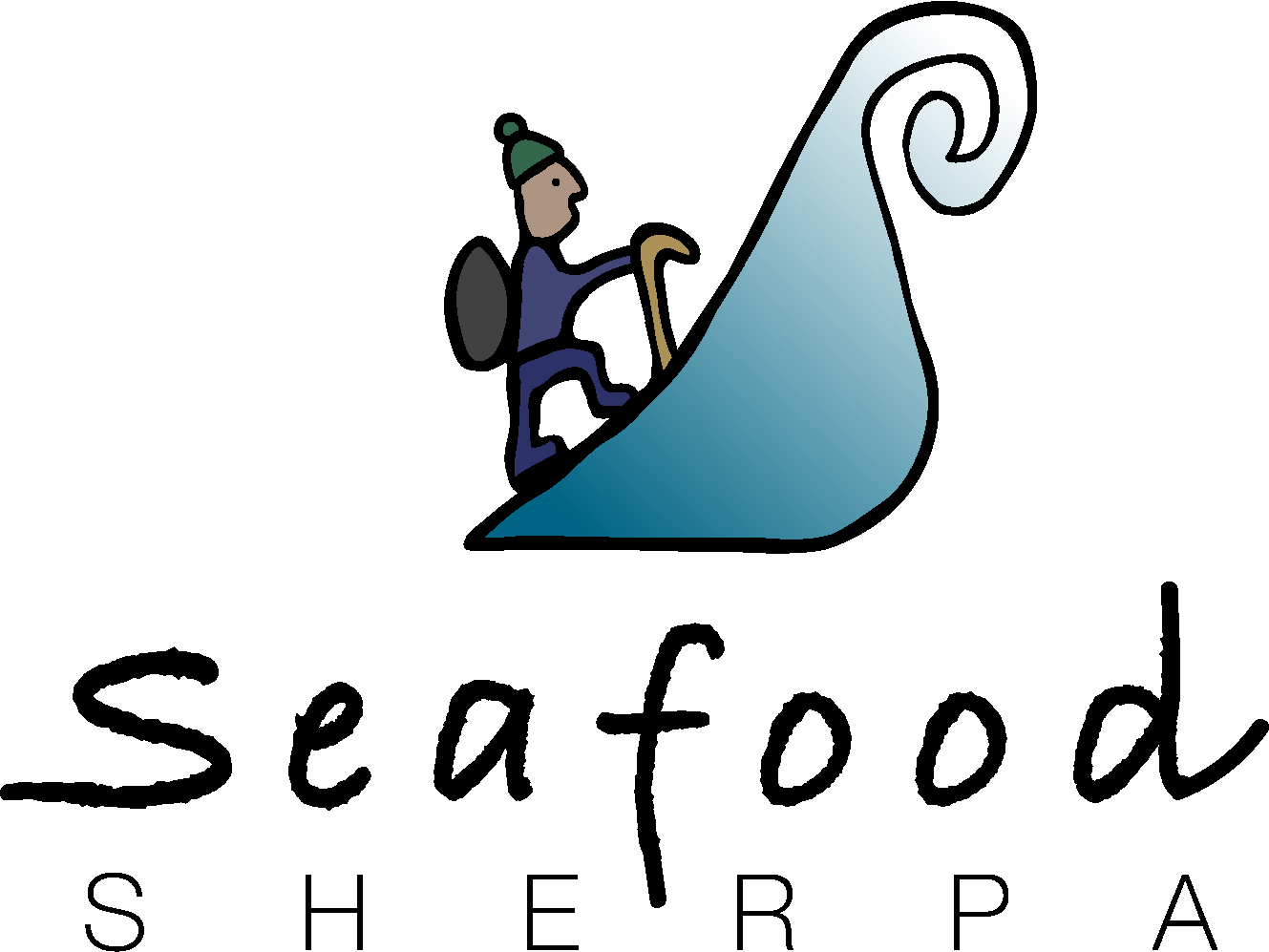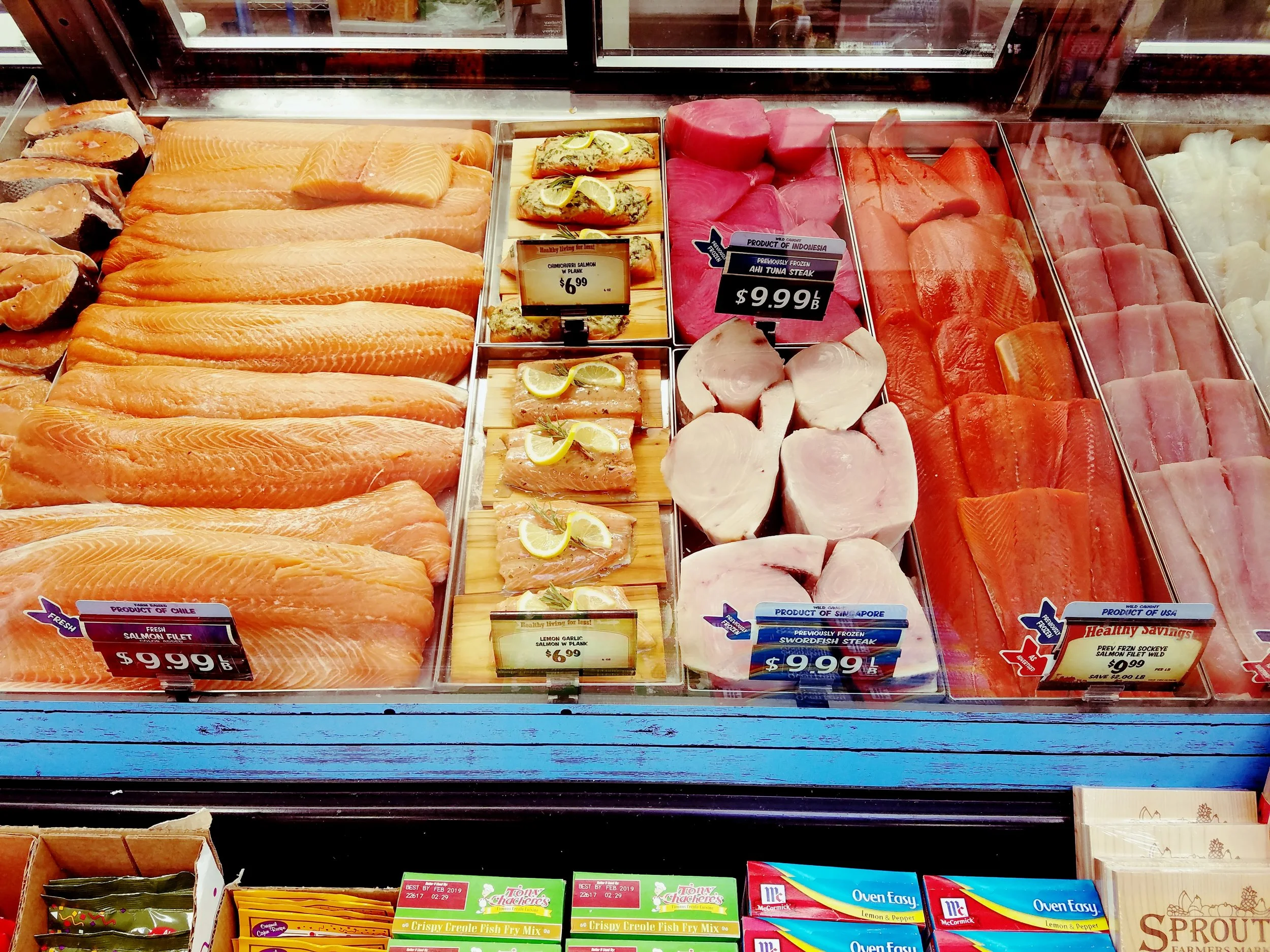EATING SUSTAINABLE SEAFOOD DOESN'T HAVE TO BE EXPENSIVE
One of the most common excuses for not buying sustainable seafood is that it is too expensive. I hear it from friends and I see it on social media. I have helped individuals in several cities across the country to find a source of responsibly harvested seafood that fits within their budget. People assume that the more environmentally conscious decision will naturally cost more and occasionally it does, but in many cases, that is simply not true. If people are equipped with a little bit of knowledge, they can find food that is not only better quality, but cheaper, while still being seafoodwatch approved. I hope that I can equip people with the tools to make the best decision possible in every situation. I believe it is of vital importance to protect our fisheries as our population, and thus our demand for seafood continues to grow. It is the second most important message I have to offer, and before I continue, I feel it is necessary for me to share with you my first:
What you choose to eat is nobody else’s business.
You won’t catch me calling people out for eating bluefin tuna and you won’t catch me telling people that they are killing the planet for buying Chinese shrimp. I believe that you have to make the best decision for your own family first and if you need to find the absolute cheapest shrimp in the market, you’ll be buying frozen Indonesian, Chinese, or Indian farmed shrimp for around $6 a pound, peeled. I’d rather see people feeding their children a diverse diet full of healthy proteins, regardless of the source than see them avoid seafood altogether. So, that said, eat what you want, but know that there is usually a good alternative for an equal price if consumers know where and how to look.
Here’s a quick story from this week. I had a couple of friends over. I put out 3 types of fish as a little experiment. These were grilled simply with a little butter, salt, and pepper. Nothing fancy, but all three were prepared the same. I had them try each fish and then rank them in order of preference. They landed on ocean perch first (2.49 per lb), vermilion rockfish second (5.99 per lb), striped bass third (7.99 per lb). Ocean perch are not cheaper because they are mass produced on some sketchy farm in a rural Asian town with lax regulations. They are cheaper because consumers don’t recognize the name and they are relatively abundant right now. They are a good alternative according to seafoodwatch and they are not heavily fished. To be fair, none of these are on the avoid list, but the best fish we ate was a very cheap, good choice fish that most people wouldn’t pick. There are plenty of “bad” fish that we could have chosen from that market that were more expensive. Understanding the undervalued fish options, is a great way to find bargains and take pressure off of the overfished species.
You don’t have to go to a crunchy, hippie grocery store in an uppity neighborhood to find good seafood choices. In fact, there are good choices in every type of market. In my community in Northern California, I can buy my seafood from Safeway (a regional chain), Costco (a national bulk megastore), Ranch 99 (a regional Asian grocery), Whole Foods (a national upscale grocery), Sprouts (a regional chain), and Gene’s Fine Foods (an independent local upscale grocery). Here is how to shop each of these, from most expensive to least. I’m sure you have some similar options wherever you live.
· Gene’s is the most expensive, but they have some great quality and the service is fantastic. They get some neat stuff, and they really take great care of it. That does not mean it is dependably sustainable. They often have orange roughy, a fish that is on the avoid list according to just about everyone. Occasionally, they have some swordfish from the avoid list as well. At Gene’s, you can make a good choice with their branzino which is one of their cheaper offerings or Pacific Halibut which is not at almost $30 per pound.
· Whole Foods is a little less pricey, but still on the high end. With Whole Foods, you can be sure that you are always buying reasonably responsible seafood. If you don’t mind spending the money, you don’t have to do the research. Everything they sell is OK. There are some competitively priced options in there too. They often have salmon for 9.99 or 10.99 a pound, which is comparable to many places. Their rockfish, tai snapper, and sea bream are generally reasonable.
· Sprouts looks and feels a little Whole Foods, but is priced a little bit cheaper. They have great produce and some cool specialty products. Their seafood is priced pretty competitively, however, they don’t seem to make any effort to offer sustainable seafood choices. Their shrimp is comparable to Safeway and Ranch 99, but from Indonesia and Vietnam. These products have sustainability, but also nutritional red flags. Their Mahi is from Indonesia as well, which is on the seafoodwatch avoid list. This store has more bad choices than good ones and there is not really any money savings. Your best bet here is the scallops at a reasonable price of 10.99 and from a good alternative source. They are not bad on salmon most of the time.
· Safeway has a great selection and mostly good choices. They have Dover sole fillets for 6.99 a pound, sockeye salmon for 8.99 a pound and mussels for 5.99 a pound which is the best price in my area. They have a wide variety of good frozen options as well. For a reasonable price, you can definitely find something seafoodwatch approved here. For specific advice look it up on your phone using the app or just go to the website. I don’t think they make any particular effort to have sustainable products, but the only avoid list items I ever see in there are tuna and swordfish from poorly regulated fisheries. Their salmon is a great quality from good US and Canadian sources at a good price.
· Ranch 99 is usually the cheapest, but you have to buy most fish whole. They will process it for you, but you have to factor the prices to compare to fillets that you would find at other stores. You can assume most fish will yield at least 40%, so multiply the price by 2.5 to get a conservative boneless skinless fillet estimate. Ranch 99 has a great selection but only about half of the options are going to be responsible choices. The other half are overfished, from sketchy farms, or are mislabeled. They occasionally have rough eye rockfish, a fish that lives up to 200 years and is slow to reproduce or Asian farmed golden pompano which come from some pretty dirty fish farms. You can save a lot, but you need to know what you are buying. This week, they had some real bargains with Canary Rock Cod at 3.99 per pound. That is about $8 a pound once they fillet it. Ocean perch at 2.49 a pound yields fillets for about $6 a pound, comparable to just about anything in town and a very responsible choice. They had petrale sole and ocean whitefish for 2.99 a pound and cobia steaks for 5.99 a pound. All great bargains.
In addition, just knowing a few things about what fish taste like can help you make a good decision. If you know that a vermilion snapper is just as good as a red snapper, you can get a cheaper fish that is less pressured. If you know that an eco friendly farmed cobia is similar in texture to a swordfish and tastes a little better, you can save a lot on cost. If you know that an ocean perch tastes better than a striper from Taiwan, you can save yourself about 65% of the cost and avoid eating a fish with mercury and environmental pollution concerns. Understanding what you are buying and looking for fish that are less commercially popular and seafoodwatch approved, will allow you to have the best of all worlds. You can eat better, eat cheaper, and support good fisheries, all in one shot.
Don’t give up on sustainable seafood because of a perceived cost issue. If you want some help, feel free to reach out to me or you can check out the FISH PROFILES on our site. These profiles will give you a good idea of alternative fish to the one you might be considering, and also lets you know the seafoodwatch recommendation. I’m always interested in helping people find seafood where they live that fits their budget. In the long run, we all win when we protect our oceans.



